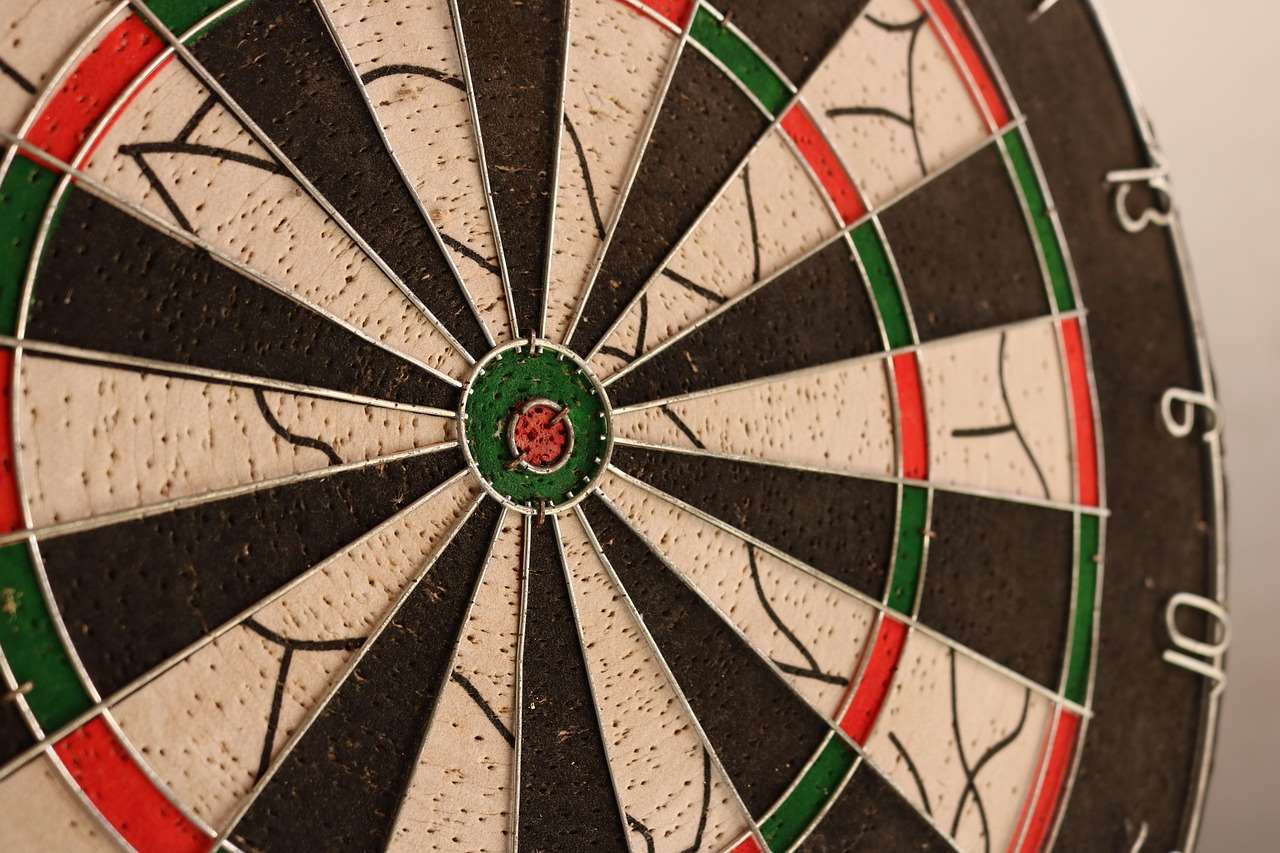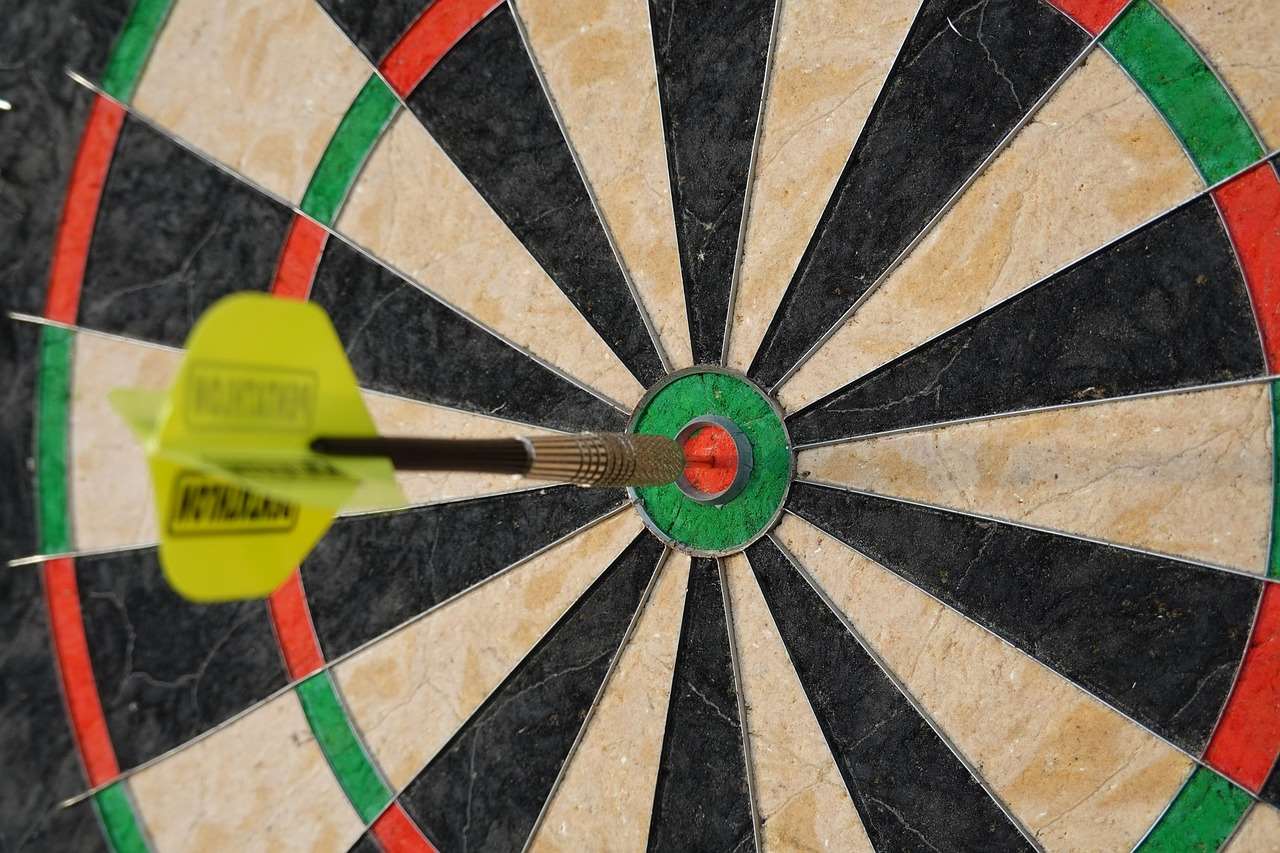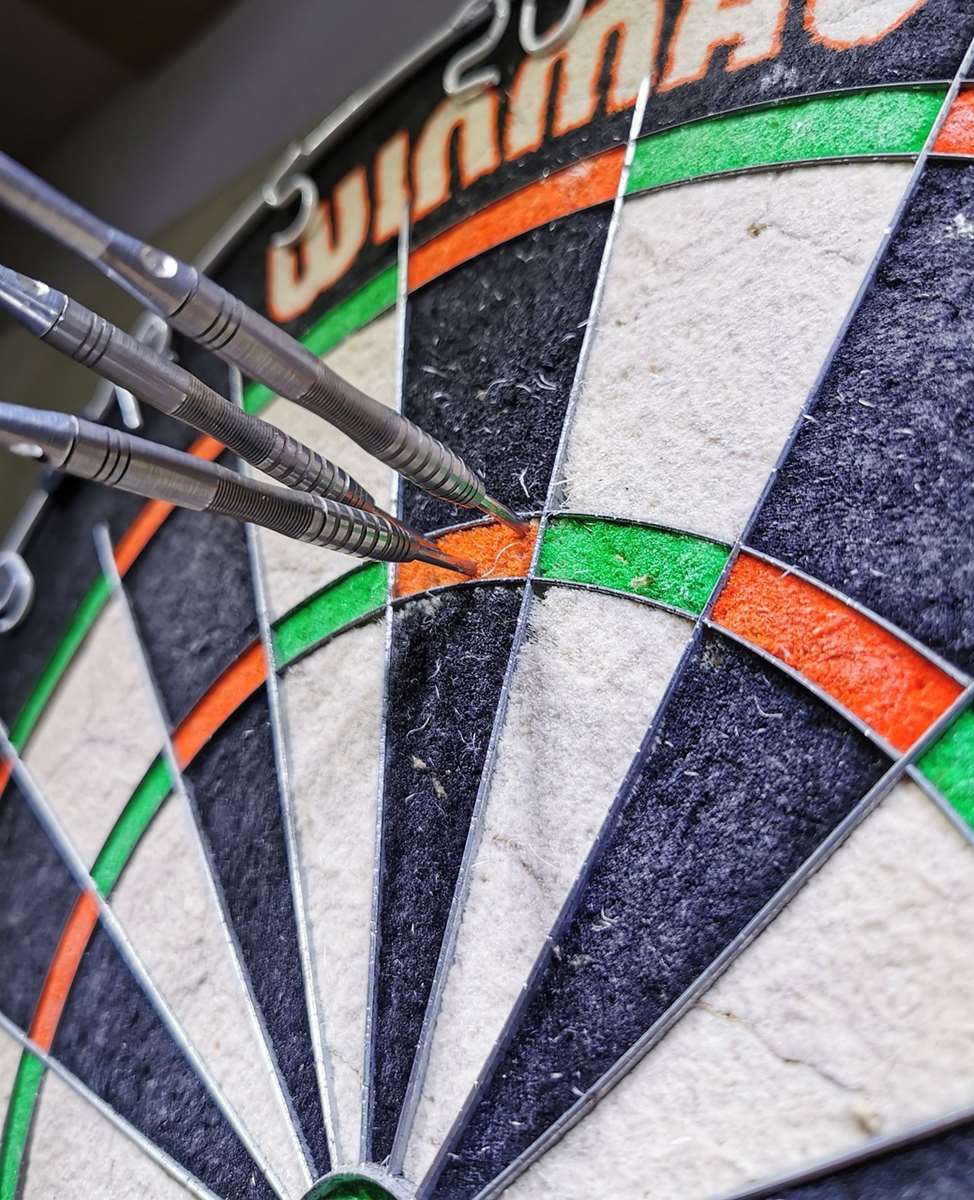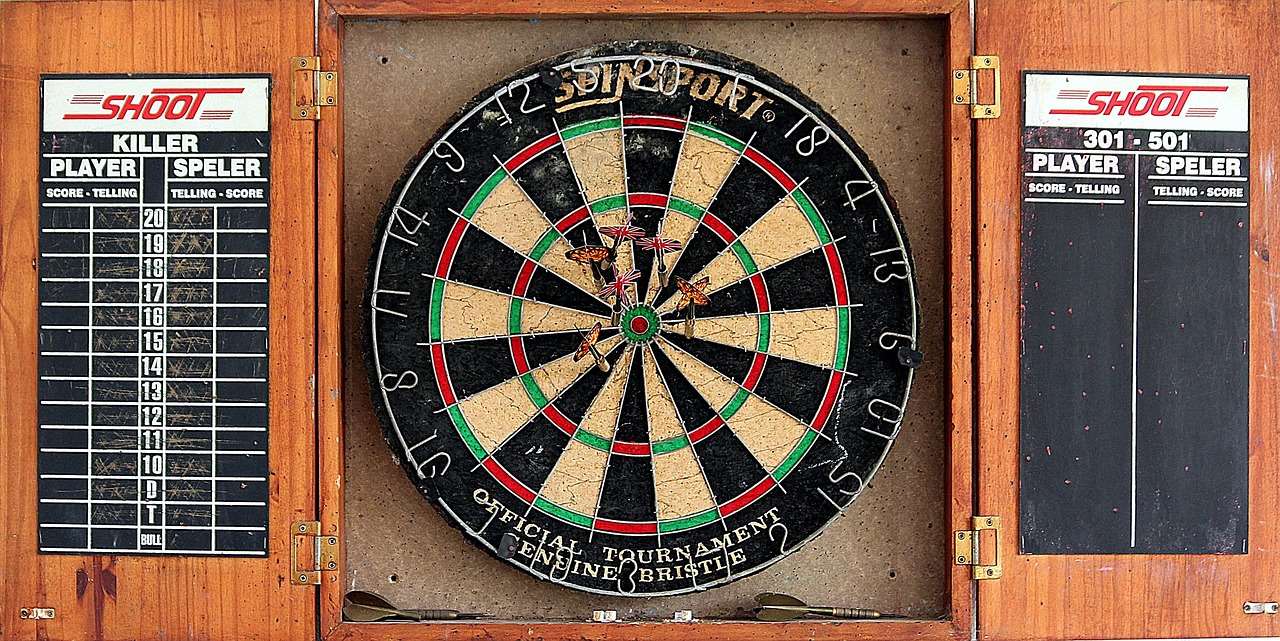An adhesive throw line, also known as a dartboard throw line or oche line, is a simple yet crucial tool for ensuring fair and consistent play in darts. It marks the precise distance a player must stand from the dartboard when throwing, and this article delves into everything you need to know about choosing, installing, and maintaining your adhesive throw line, along with exploring alternatives and essential considerations.
⚠️ Still Using Pen & Paper (or a Chalkboard)?! ⚠️
Step into the future! The Dart Counter App handles all the scoring, suggests checkouts, and tracks your stats automatically. It's easier than you think!
Try the Smart Dart Counter App FREE!Ready for an upgrade? Click above!
What is an Adhesive Throw Line and Why Use One?
At its core, an adhesive throw line is a physical marker placed on the floor to designate the official throwing distance in darts. While seemingly basic, it serves several essential functions:
- Ensuring Fair Play: By providing a consistent and clearly defined throwing point, it eliminates disputes and ensures both players are adhering to the regulation distance.
- Maintaining Consistency: Even for casual players, using a throw line helps develop a more consistent throwing technique over time.
- Preventing Foot Faults: It provides a visual reminder to stay behind the line, preventing accidental or intentional encroachment during a throw.
- Creating a Professional Environment: Whether you’re playing in a serious tournament or a friendly game at home, a dartboard throw line adds a touch of professionalism to the setup.
Essentially, an adhesive throw line promotes fairness, consistency, and adherence to the rules of the game, regardless of skill level. Investing In Premium Dart Equipment (investing-in-premium-dart-equipment) can enhance the overall experience even further.

Types of Adhesive Throw Lines
While the basic function remains the same, adhesive throw lines come in various materials and designs. Understanding these differences can help you choose the best option for your needs and playing environment.
Material
- Vinyl: The most common and affordable option, vinyl throw lines are durable and easy to apply. They offer good grip and resistance to wear and tear.
- Rubber: Rubber throw lines provide excellent grip and cushioning, making them a comfortable choice for players who spend a lot of time throwing darts. They tend to be slightly more expensive than vinyl.
- Carpet: Some throw lines are made with a carpeted surface, offering a soft and comfortable feel underfoot. These are often preferred for dedicated dart rooms with carpeted floors.
- Metal: For a more permanent and durable solution, metal throw lines are available. These are typically screwed or bolted into the floor.
Design
- Solid Line: A simple, unbroken line marking the throwing distance. This is the most common and straightforward design.
- Segmented Line: A line made up of individual segments or tiles, allowing for easy customization and replacement.
- With Toe Line: Some throw lines feature a raised or textured area that acts as a physical toe line, providing a more tactile reminder to stay behind the line.
- Novelty Designs: For recreational players, there are throw lines available with fun and decorative designs.
The choice depends on personal preference, budget, and the type of flooring in your playing area. Regardless of the material, ensure the throw line is clearly visible and provides adequate grip to prevent slips.
How to Properly Install an Adhesive Throw Line
Correct installation is crucial to ensure the adhesive throw line accurately marks the official throwing distance. Here’s a step-by-step guide:
- Measure the Distance: The official distance from the front of the dartboard (the surface you throw at) to the throw line is 7 feet 9 1/4 inches (2.37 meters). Accurate measurement is paramount.
- Mark the Spot: Use a measuring tape and pencil to mark the exact location of the throw line on the floor. Ensure the line is perpendicular to the center of the dartboard.
- Clean the Surface: Thoroughly clean the floor surface where the throw line will be placed. Remove any dirt, dust, or debris. Use a degreaser if necessary.
- Apply the Adhesive: Peel off the backing from the adhesive throw line, exposing the adhesive.
- Carefully Position: Align the throw line with the marked line on the floor.
- Press Firmly: Press the throw line firmly onto the floor, working from one end to the other to avoid air bubbles.
- Allow to Cure: Allow the adhesive to cure for the recommended time (usually 24-48 hours) before using the throw line. This ensures a strong and lasting bond.
For metal throw lines, follow the manufacturer’s instructions for drilling and securing the line to the floor. Properly installed, a dartboard throw line will serve as a reliable marker for consistent play.

Alternatives to Adhesive Throw Lines
While adhesive throw lines are a popular choice, alternative options exist for marking the throwing distance:
- Portable Dart Mats: These mats typically have the throw line already marked on them and can be easily moved and stored.
- Laser Throw Line: A laser device projects a visible line onto the floor, marking the throwing distance. These offer precision and adjustability.
- Tape: While not as durable or professional-looking, tape can be used as a temporary throw line. Use a high-quality tape that provides good grip.
- Painted Line: For a more permanent solution, you can paint a line directly onto the floor. Ensure you use a durable and non-slip paint.
The best alternative depends on your specific needs and preferences. Portable dart mats are great for portability, while laser throw lines offer precision and adjustability. Using tape as an alternative is generally only suitable as a short-term temporary solution. Choosing the Choose Best Dart Equipment starts with your choice of dartboard and throwing line.
Factors to Consider When Choosing an Adhesive Throw Line
Selecting the right adhesive throw line involves considering several factors:
Durability
Choose a material that can withstand regular use and foot traffic. Vinyl and rubber are generally good choices for durability.
Grip
Ensure the throw line provides adequate grip to prevent slips, especially if you’re playing on a smooth floor.
Visibility
Select a color and design that are clearly visible and easy to see from the throwing position. A contrasting color to your floor is often best.
Ease of Installation
Opt for a throw line that is easy to install and requires minimal effort. Adhesive throw lines are generally the easiest to install.
Price
Consider your budget and choose a throw line that offers a good balance of quality and affordability. Budget vs Premium Darts Compared (budget-vs-premium-darts-compared), just like dart throw lines, come with similar considerations. Also, take into account the Quality Comparison Budget Premium Darts to make a smart purchase.

Maintaining Your Adhesive Throw Line
Proper maintenance can extend the lifespan of your adhesive throw line:
- Regular Cleaning: Clean the throw line regularly with a mild detergent and water to remove dirt and debris.
- Avoid Harsh Chemicals: Avoid using harsh chemicals or abrasive cleaners, as they can damage the material and adhesive.
- Protect from Excessive Wear: If possible, try to minimize direct foot traffic on the throw line when not in use.
- Replace When Necessary: Over time, the adhesive may weaken or the material may wear down. Replace the throw line when it no longer provides adequate grip or visibility.
Troubleshooting Common Issues
Here are some common issues and how to address them:
- Throw Line Peeling Up: This is often caused by improper installation or a dirty surface. Re-clean the surface and re-apply the throw line, ensuring firm pressure.
- Throw Line Slipping: This can be due to a lack of grip or a worn-out adhesive. Consider replacing the throw line with one that offers better grip.
- Throw Line Not Straight: Use a measuring tape and level to ensure the throw line is properly aligned.

Legal Considerations for Tournament Play
In official dart tournaments, the placement and type of dartboard throw line are strictly regulated. Adhering to these regulations ensures fair play and avoids disqualification.
- Official Distance: The official distance from the front of the dartboard to the throw line is 7 feet 9 1/4 inches (2.37 meters).
- Type of Line: The throw line must be a clearly visible and solid line.
- No Encroachment: Players must stand behind the throw line when throwing.
Consult the official rules of the tournament you’re participating in for specific regulations regarding throw lines and other equipment.

Conclusion
An adhesive throw line is an essential tool for any dart player, promoting fair play, consistency, and adherence to the rules. By understanding the different types of throw lines, how to properly install and maintain them, and the legal considerations for tournament play, you can enhance your dart playing experience and ensure a level playing field. Remember to Finding Value Budget Dart Sets and matching them with the right throw line for ultimate gameplay.
Now that you’re equipped with this knowledge, choose the right adhesive throw line for your needs and elevate your dart game to the next level. Consider upgrading to Best Budget Darts For Beginners for a full set to start playing immediately!
Hi, I’m Dieter, and I created Dartcounter (Dartcounterapp.com). My motivation wasn’t being a darts expert – quite the opposite! When I first started playing, I loved the game but found keeping accurate scores and tracking stats difficult and distracting.
I figured I couldn’t be the only one struggling with this. So, I decided to build a solution: an easy-to-use application that everyone, no matter their experience level, could use to manage scoring effortlessly.
My goal for Dartcounter was simple: let the app handle the numbers – the scoring, the averages, the stats, even checkout suggestions – so players could focus purely on their throw and enjoying the game. It began as a way to solve my own beginner’s problem, and I’m thrilled it has grown into a helpful tool for the wider darts community.